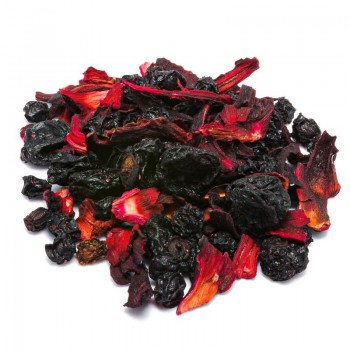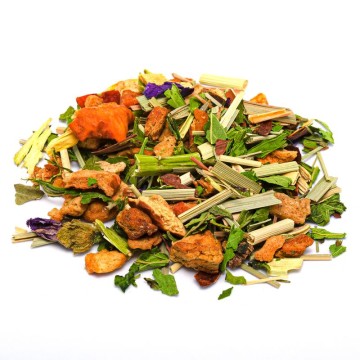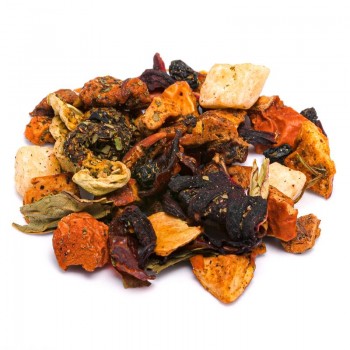Ginger is the main component, which determines a tantalizing and pungent flavour, perfect for welcoming the delicious strawberry. An intense dose of ginger, with its intense and appetizing aroma, is attenuated by the fruity notes of strawberry and apple (which combines the natural tartness), balancing the taste without compromising it. The final soft undertone of marigold makes the character of this infusion even more sophisticated. Spices and fruit are always a winning combination for those who love complexity, and the ginger and strawberry infusion does not disappoint. Both cold and hot, it can be enjoyed at any time of day and in any season for its exotic taste. The origin of the ingredients from cultivation increases the beneficial qualities of this mixture.
Ginger and strawberry infusion: properties and benefits
By taking this infusion you can combine the antioxidants of strawberry and ginger, with a beneficial contribution for our body. Furthermore, the mixture can perform a good digestive function, regulating the transit of food at the gastrointestinal level and facilitating the elimination of gas. It is ginger that facilitates this action, supported by apple and the soothing properties of calendula. Ginger also helps to counteract menstrual cycle disorders and irritations, as well as cleansing the body of toxins and clearing the respiratory tract of excess mucus. This happens thanks to gingerol, the spicy aromatic substance that stimulates blood circulation, helping to calm irritated mucous membranes. The combination with strawberry increases the richness of natural substances contained in the ginger roots, with an antioxidant function - i.e. to counteract cellular aging. We know that strawberries are a source of anthocyanin antioxidants, which help our body to counteract the attack of free radicals, responsible for cellular damage. A factor that also benefits the immune system. Since they also support microcirculation, like the nutrients in ginger, the union of these elements is useful for the well-being of the cardiovascular system.
Origins and history of cultivation
The history of ginger dates back 5000 years, originating from Southeast Asia. The plant was domesticated by local populations and was one of the first exported to Europe during the spice trade. It was appreciated for medical and culinary purposes first in China, then in ancient Greece and Rome, in the Middle East and throughout the Mediterranean. Over time it also spread to Northern Europe, remaining an expensive spice, considered a symbol of wealth. The spice comes from the rhizome of the ginger flowering plant, which belongs to the same family of plants as cardamom and turmeric.
Ginger has many uses: fresh, juicy and meaty, it is present in many recipes as an ingredient . When left to ripen it dries out and can be made into a powder, used as a spice in bread doughs and gingerbread biscuits, as well as in ginger ale. On a herbal level, ginger has been recommended for centuries to treat a variety of ailments such as nausea and digestion difficulties, to relieve joint and muscle pain, reduce inflammation (in the past, roots and herbs were used for such prescriptions) , and also to sweat and expel toxins in case of a cold.
The strawberries we know today are the result of a selection from ancient wild varieties, also called wild strawberries. Archaeological evidence shows that these varieties have been present since the Neolithic. Much appreciated in the classical era, in Ancient Rome, according to the myth, strawberries were linked to the erotic myth of Aphrodite. In medieval and early modern Europe, they continued to be a symbol of love and even Christianity. The modern strawberry, however, was born in the eighteenth century by combining two American varieties. The strawberry Fragaria virginiana, which grows throughout North America and was a sacred fruit to many indigenous tribes, and the Chilean strawberry Fragaria chiloensis, much larger but less sweet. By crossing the two species, in 1765, Fragaria x ananassa was born. Combining the size of the Chilean variety and the sweetness of the North American one, Fragaria x ananassa quickly became the favorite variety throughout Europe.
Fruit and flowers: the ingredients of our infusion
Ginger is the rhizome (root) of the flowering plant of the same name Zingiber officinale of the Zingiberaceae family. It is a herbaceous tropical plant with lanceolate leaves and white or yellow flowers. It grows best in well-drained soil, as the underground rhizomes used pFor spice, they don't like waterlogged soil.
The strawberry is the fruit of the plant of the Fragaria genus, belonging to the Rosaceae family. The most common strawberries are represented by the cultivars of the Fragaria × ananassa hybrid, called garden strawberry. Varieties can vary in size, color and shape and during the ripening season.
The Malus domestica plant of the Rosaceae family gives us apples. It is a tree native to Asia, now widespread throughout the planet. The fruits vary in many varieties, colors and sizes, as well as in the consistency of the pulp. Calendula officinalis is a herbaceous plant of the Asteraceae family. It grows to about 70 centimeters tall. Its yellow-orange flowers, which is why it is also called fiorrancio, are known for their beneficial and soothing cosmetic properties.
Nutritional values of ginger and strawberry infusion
This herbal tea contains antioxidants such as anthocyanins and quercetin, phytonutrients, minerals, vitamins and volatile oils. Gingerols derive from ginger (which gives it its spicy qualities), while minerals such as calcium, potassium, magnesium and phosphorus are also present.
How to use the ingredients in the infusion
The infusion is obtained by placing approximately 3-5 grams of the ginger and strawberry mixture with water at 100 °C in a cup (250 ml).
Leave to infuse for 10 to 12 minutes before drinking. Add honey or sugar, if desired.
Ginger and strawberry infusion: side effects and contraindications
To avoid unwanted effects it is necessary to respect the recommended doses and not exceed the consumption of the infusion. Excessive intake can cause diarrhea, gastrointestinal disorders and stomach irritation, headache. Furthermore, strawberries can trigger reactions in predisposed subjects: a possible intolerance or allergy to the food must be considered. The histamine contained can cause nausea and itching. Caution advised for pregnant or breastfeeding women.



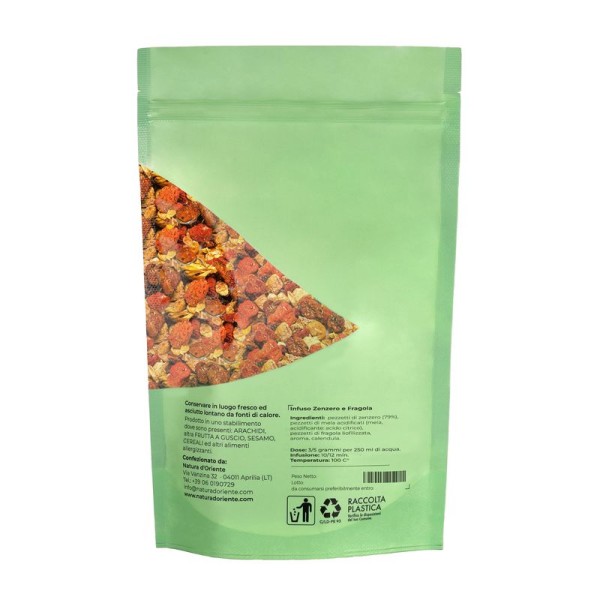







 No reward points for this product.
No reward points for this product.
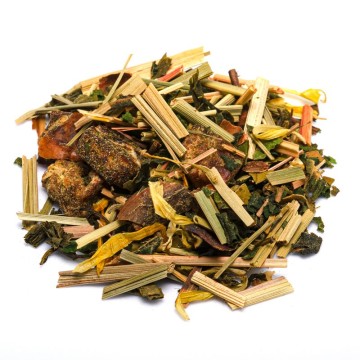
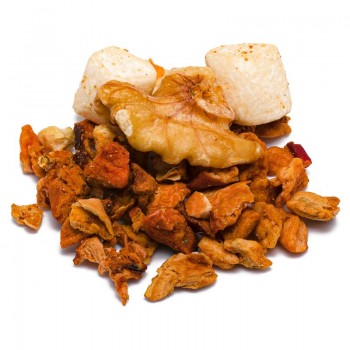
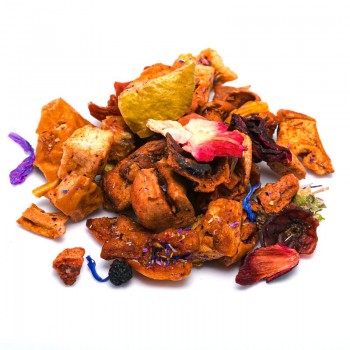
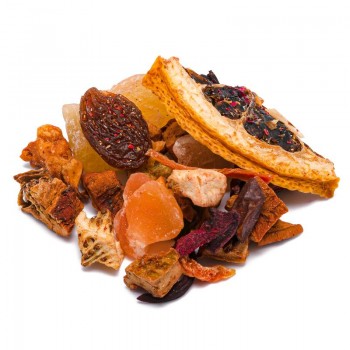
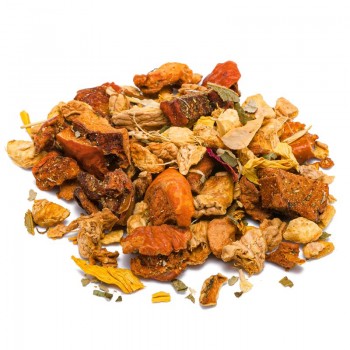


![infuso pesca melone [Natura d'Oriente]](https://www.naturadoriente.com/3535-home_default/infused-peach-melon.jpg)



![infuso pesca e vaniglia [Natura d'Oriente]](https://www.naturadoriente.com/3538-home_default/infused-peach-vanilla.jpg)
